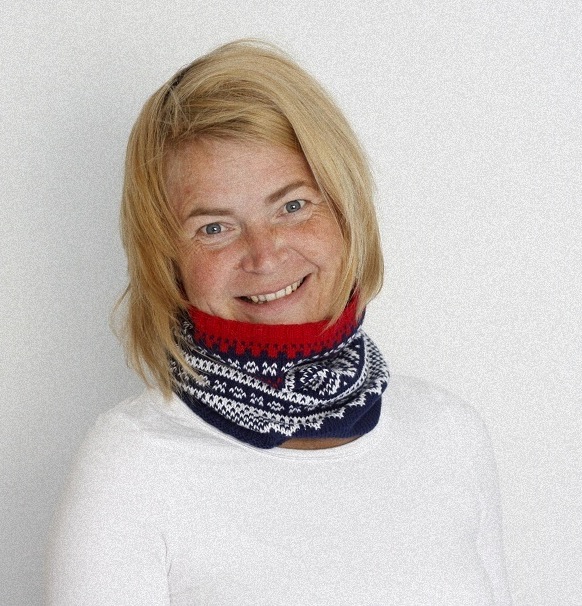
It’s pure speculation, but I think Bitten Eriksen would like Eline Oftedal’s designs.
After all, Eriksen was updating the deep-rooted tradition of Norway’s Setesdal sweater when she created another iconic pattern, the Marius pullover, in the 1920s. Long story very short: The Marius became a must-have in 1950s Norway after Eriksen’s son, Marius—a World War II hero and national slalom champion—modeled Unn Soiland Dale’s variation of the design for the Sandnes yarn company and wore the sweater in a movie.
 Now along comes Oftedal and re-imagines the Marius sweater as a racerback top. And a pair of hotpants. And a teddy bear. She turns the Setesdal design into a necktie. And an iPad cover.
Now along comes Oftedal and re-imagines the Marius sweater as a racerback top. And a pair of hotpants. And a teddy bear. She turns the Setesdal design into a necktie. And an iPad cover.
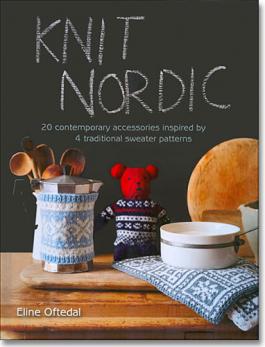 In her new book, Knit Nordic, Oftedal, an Oslo-based designer and former staffer at Norway’s parliament, puts a fresh spin on four venerable Norwegian sweater designs, including Fana and Voss. But there’s not a single sweater in her pages.
In her new book, Knit Nordic, Oftedal, an Oslo-based designer and former staffer at Norway’s parliament, puts a fresh spin on four venerable Norwegian sweater designs, including Fana and Voss. But there’s not a single sweater in her pages.
“I want a young generation that didn’t learn to knit from granny, that didn’t grow up with these sweaters, to learn to love the patterns, and for that, I felt they just needed new shapes . . . . Small, fast, and fun projects,” Oftedal says when we talk on the phone.
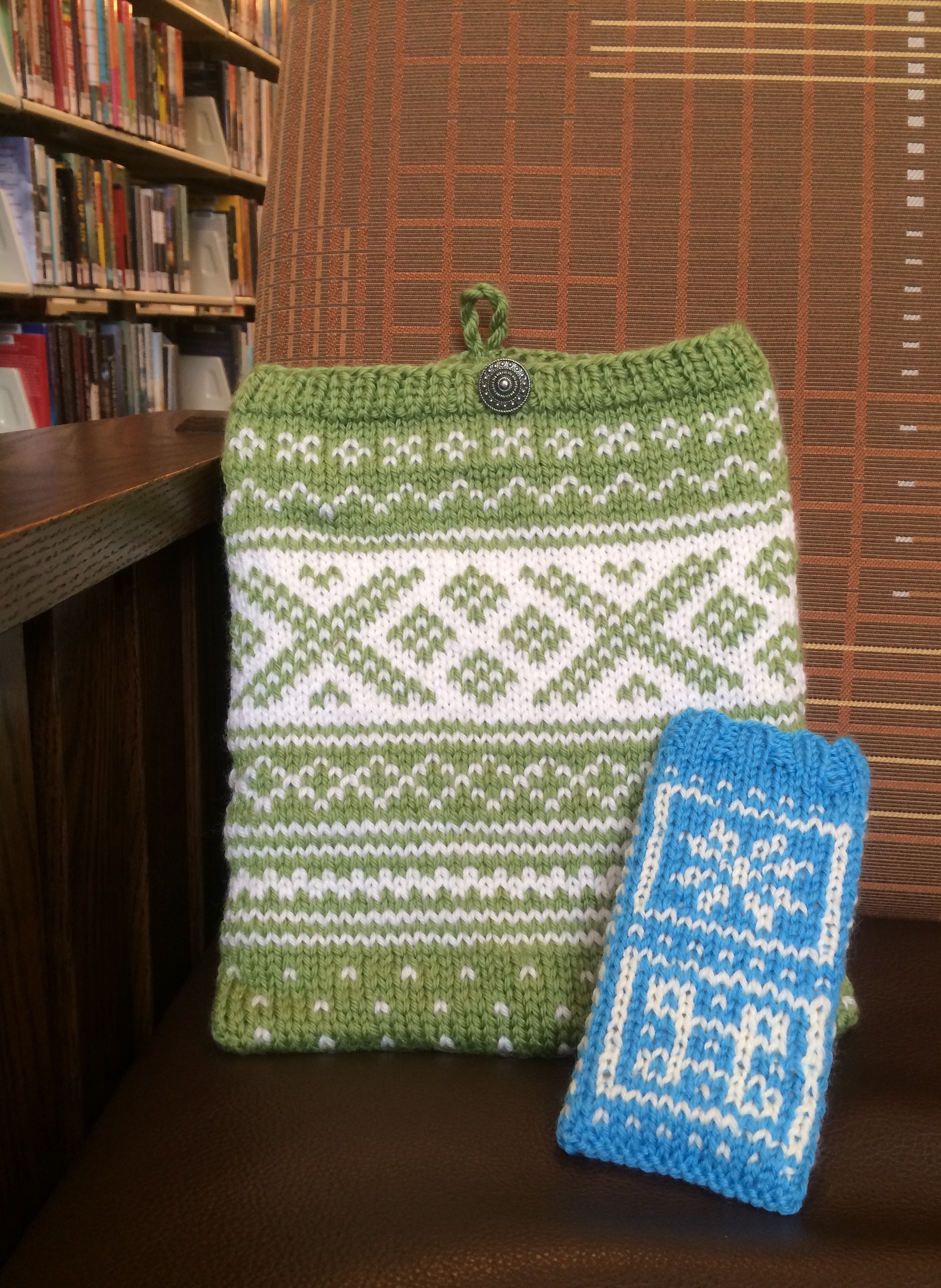 Smart little covers for tech devices are a good example. She put them in the book because the simple rectangular shapes are a perfect showcase for the pattern motifs, but also because people love to personalize their phones and tablets, she says. “We do have a much more personal relationship to our gadgets than we used to have.”
Smart little covers for tech devices are a good example. She put them in the book because the simple rectangular shapes are a perfect showcase for the pattern motifs, but also because people love to personalize their phones and tablets, she says. “We do have a much more personal relationship to our gadgets than we used to have.”
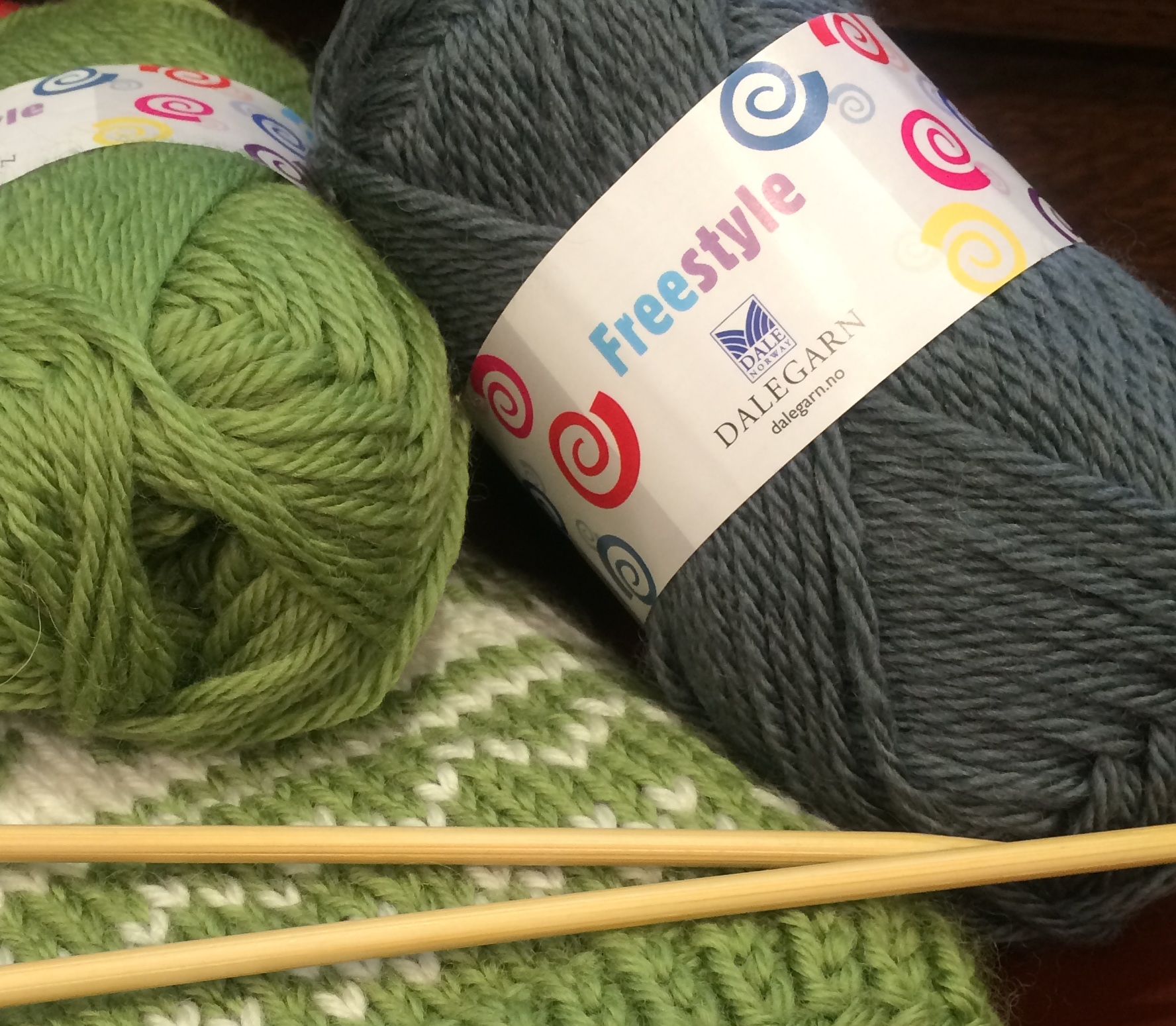 Her Setesdal iPad cover calls for a DK or worsted weight yarn. One good option is Dale of Norway’s Freestyle, a superwash wool that you can machine wash in cool water if the cover gets a little dirty from living in your purse or backpack. Instead of the traditional charcoal gray shown in the book, I picked a fresh green and swapped out Oftedal’s snap closure for a loop of twisted cord and a Norwegian pewter button.
Her Setesdal iPad cover calls for a DK or worsted weight yarn. One good option is Dale of Norway’s Freestyle, a superwash wool that you can machine wash in cool water if the cover gets a little dirty from living in your purse or backpack. Instead of the traditional charcoal gray shown in the book, I picked a fresh green and swapped out Oftedal’s snap closure for a loop of twisted cord and a Norwegian pewter button.
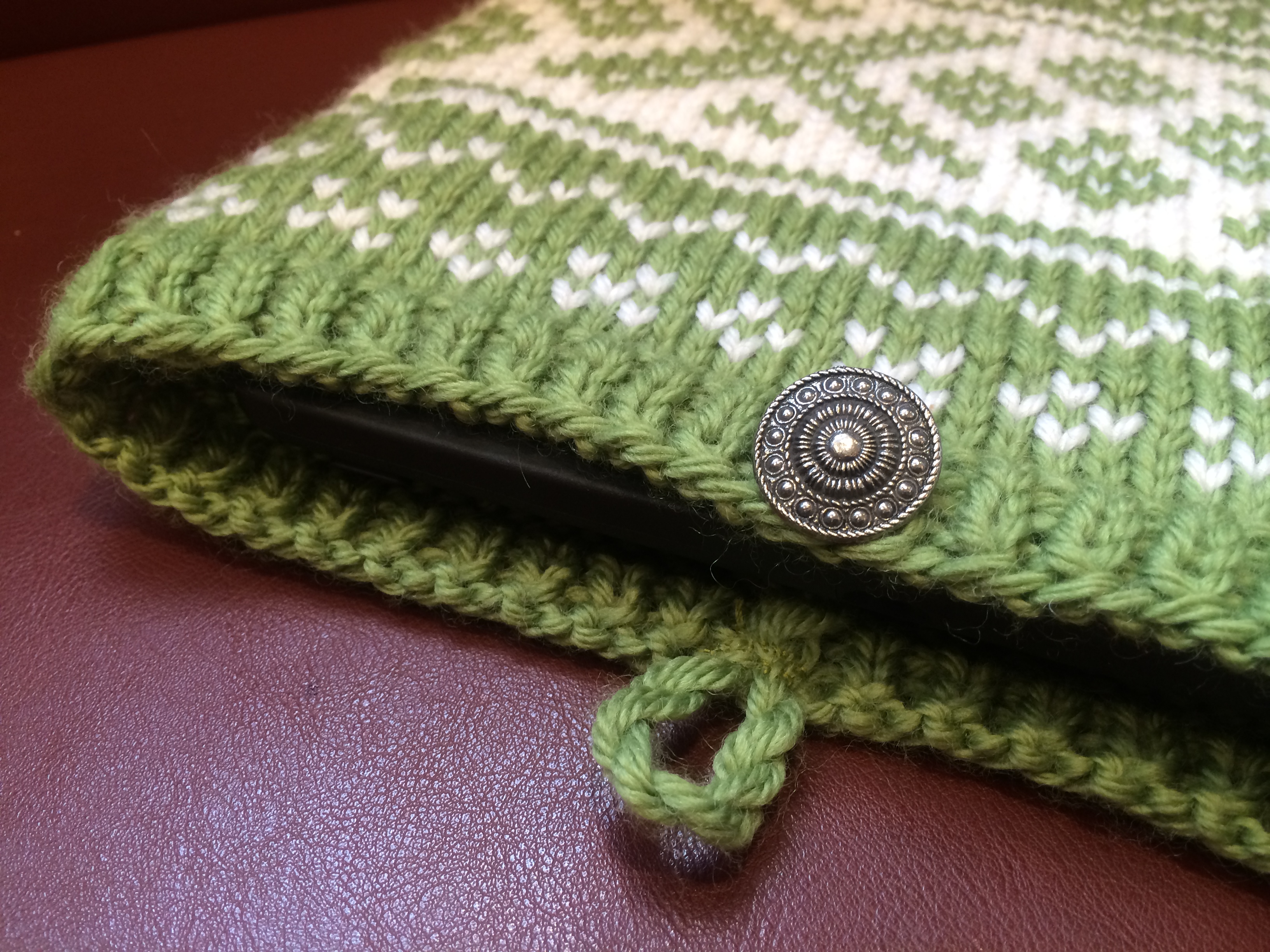
The Voss iPhone cover needs a sport weight yarn, so I grabbed Falk, another superwash wool from Dale, in a summery aqua and white.
One new thing Oftedal’s book prompted me to learn is the three-needle bind-off. This is worth knowing if finishing projects is not your favorite task, because it lets you bind off and seam at the same time.
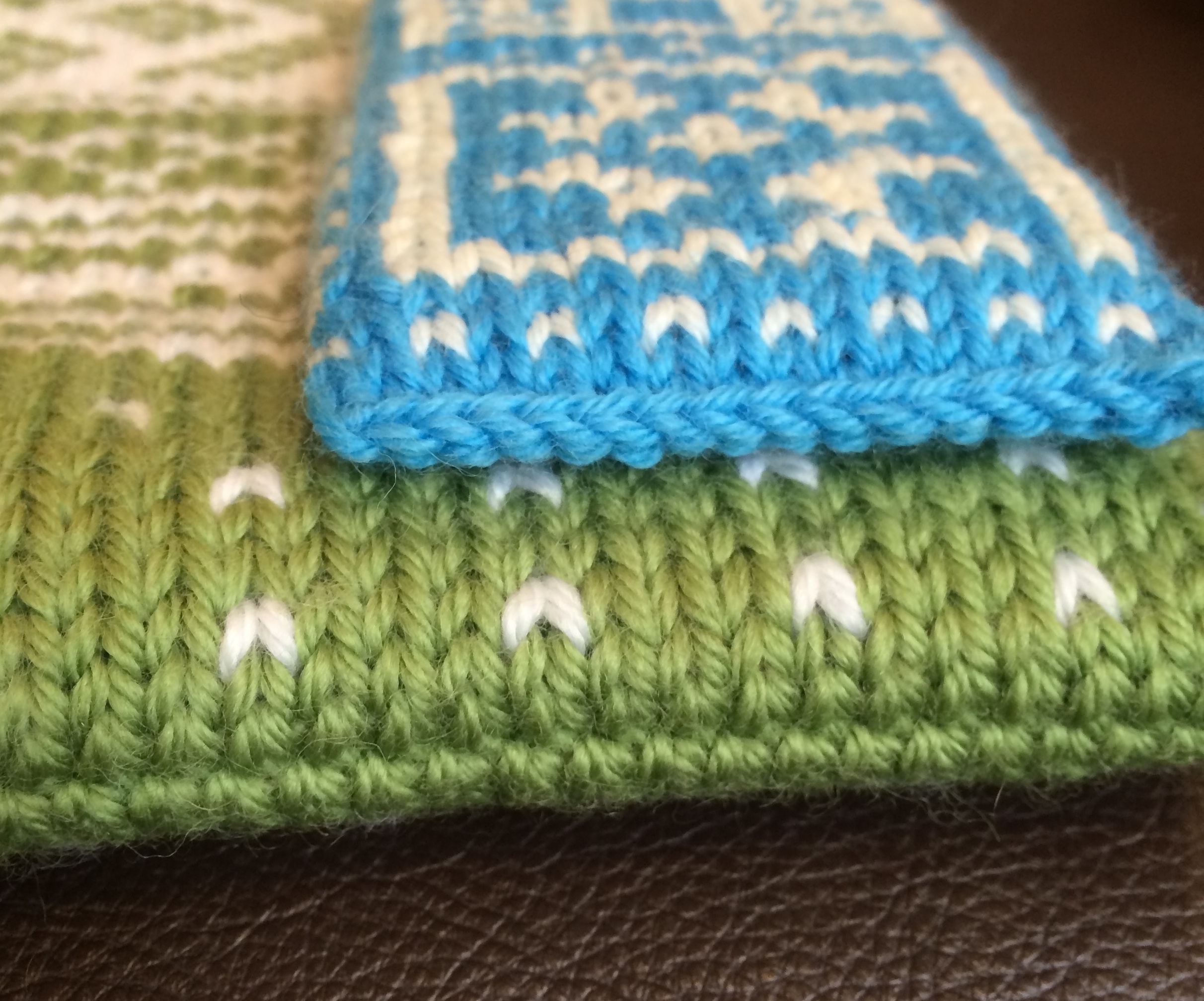 A quick YouTube video posted by Very Pink Knits shows how to do the three-needle bind-off and place the small ridge of seam allowance on the inside (wrong side) of your work. But the seam is so neat that you might want to put the ridge on the outside of your knitting as a decorative detail. That’s what I did on my phone cover.
A quick YouTube video posted by Very Pink Knits shows how to do the three-needle bind-off and place the small ridge of seam allowance on the inside (wrong side) of your work. But the seam is so neat that you might want to put the ridge on the outside of your knitting as a decorative detail. That’s what I did on my phone cover.
Knitting “has always made me have a little bit of normality in a very hectic work life,” Oftedal says. It was the “perfect craft to take along” in a career filled with travel for the parliament, for Oslo’s Peace Research Institute, and for Norway’s Ministry of Foreign Affairs. Lately, she’s taken a new part-time job—“for the Norwegian space industry, of all things!”—to make time for her growing and unexpected work as a designer.
“I’d always been knitting my own designs,” but not writing them down for other knitters, she says. On a whim a few years ago, she wrote out one of her patterns and sent it off to Vogue Knitting. To her surprise, her lacy cowl-necked shoulder wrap wound up in the 2010 holiday issue.
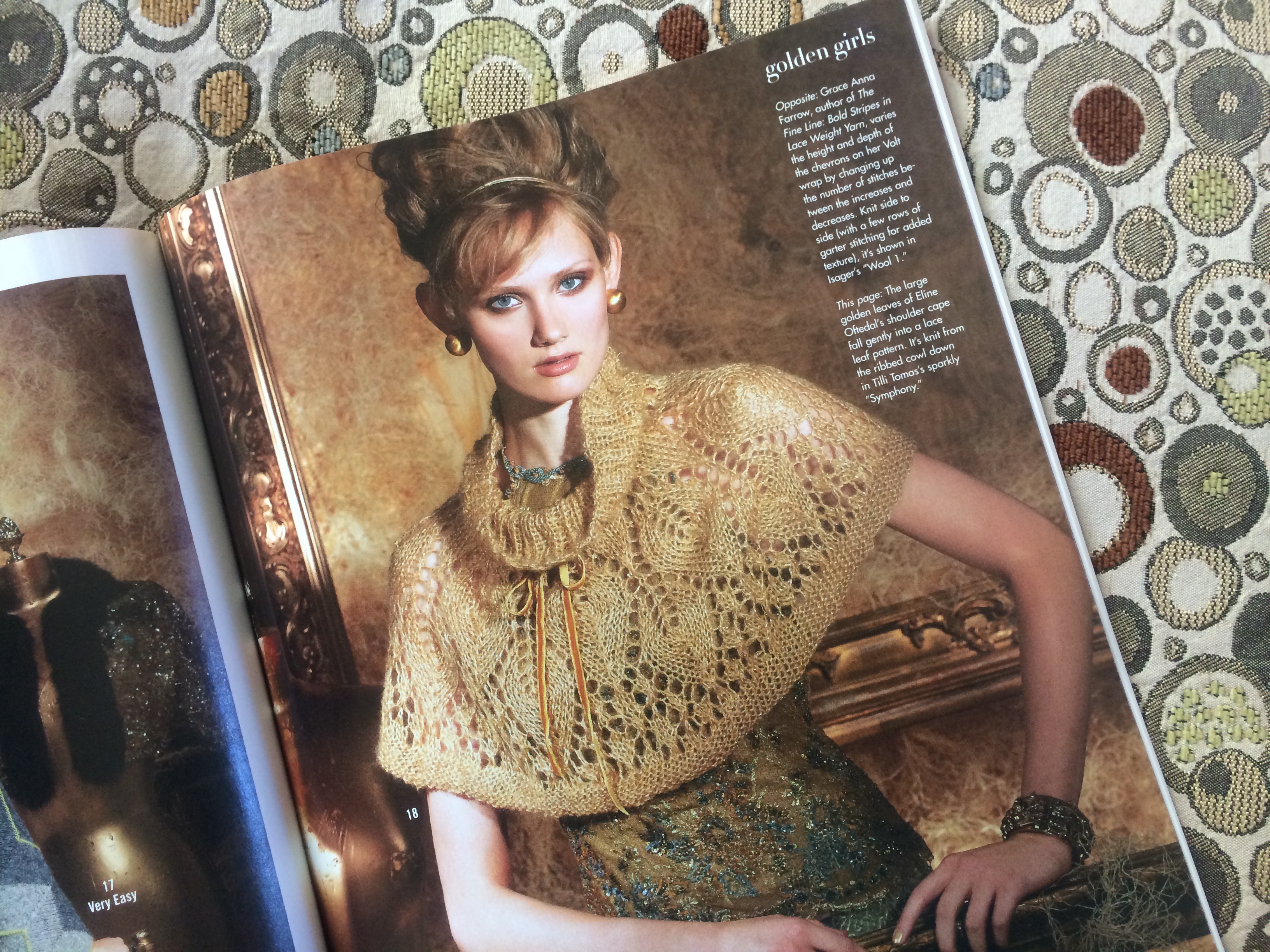
“That opened so many doors”—but not the doors of Norwegian publishers. They all turned down her proposal for Knit Nordic until the book itself came out in the United Kingdom last fall, and in the U.S. last February, and sales took off. She ultimately translated it into Norwegian for publication in her own country, where it’s also been popular.
“It’s nice that it’s here, too,” she says, “because it’s where it belongs, in a way.”
Watch for more designs from Oftedal in magazines this year. She’s got works in progress with Interweave Knits in the U.S., The Knitter in the U.K., and Norway’s Familien. A second book is coming, too, inspired by knitting in the Faroes, Iceland, and Norway.
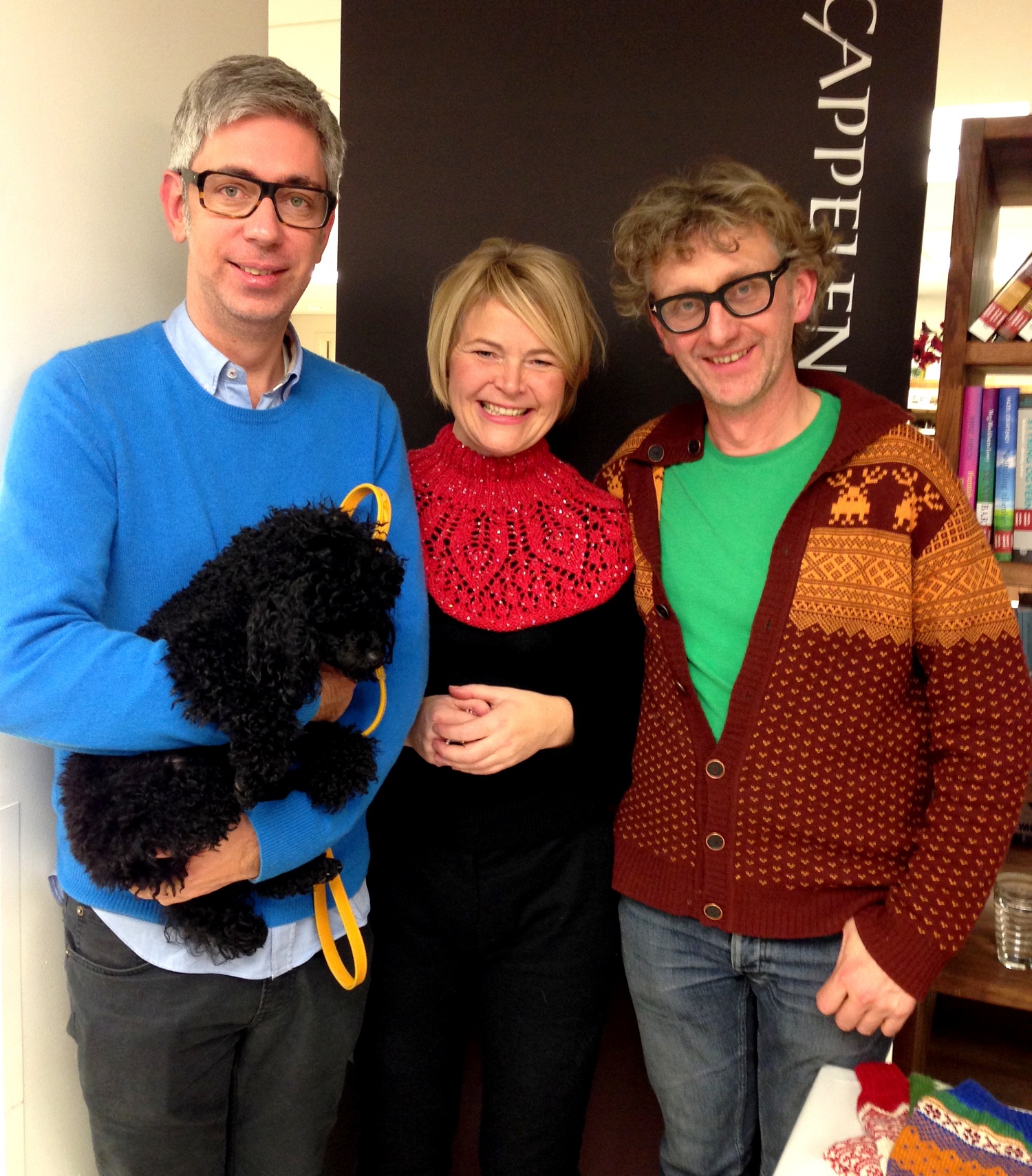
Meanwhile, she shares her creative process for anyone who wants to try their own hand at designing.
First, she takes pictures and notes of things that spark her imagination—color combinations or shapes that she likes from fashion, colors and textures from nature—and keeps them handy in a file. When she wants to design, she looks through those cues, then puts them away. “I imagine, ‘What’s the essence of these inspirational photos or words?’ And then I draw.”
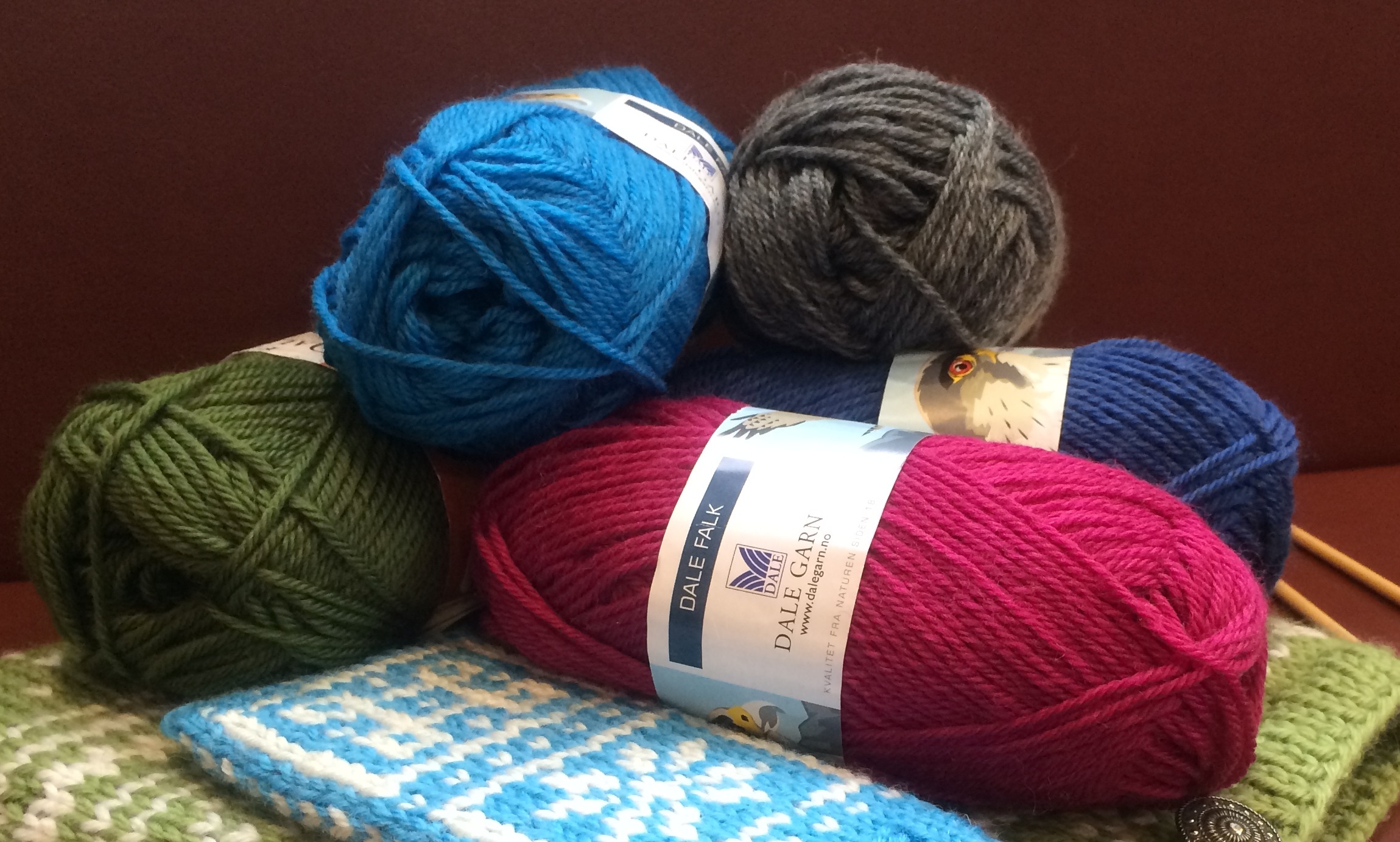 Finally, “I just take out quite a lot of my yarn—which is quite a lot!“—and spread it out on the floor. There are always color pairings that stand out, “something staring at you” from out of the pile, she says.
Finally, “I just take out quite a lot of my yarn—which is quite a lot!“—and spread it out on the floor. There are always color pairings that stand out, “something staring at you” from out of the pile, she says.
Oftedal, who surprised herself by becoming a designer, is pretty sure you have the makings of a designer, too. “I think everyone who knits is a potential designer, because you’ve taken that first step. You’re making your own things.”
—Denise Logeland
Informative, interesting inspirational. Great blog. Joan g.
So glad you enjoyed it! I sure enjoyed talking with Eline. She’s insightful as well as creative, and attuned to how the knitting culture is changing in Norway. I especially liked her idea that we’re all designers in the making. Thanks for the encouraging words about the post!
Denise
Good job, Denise. Interesting and fun article. Great motivation for more Norwegian knitting.
Tusen takk, Donna!
Denise